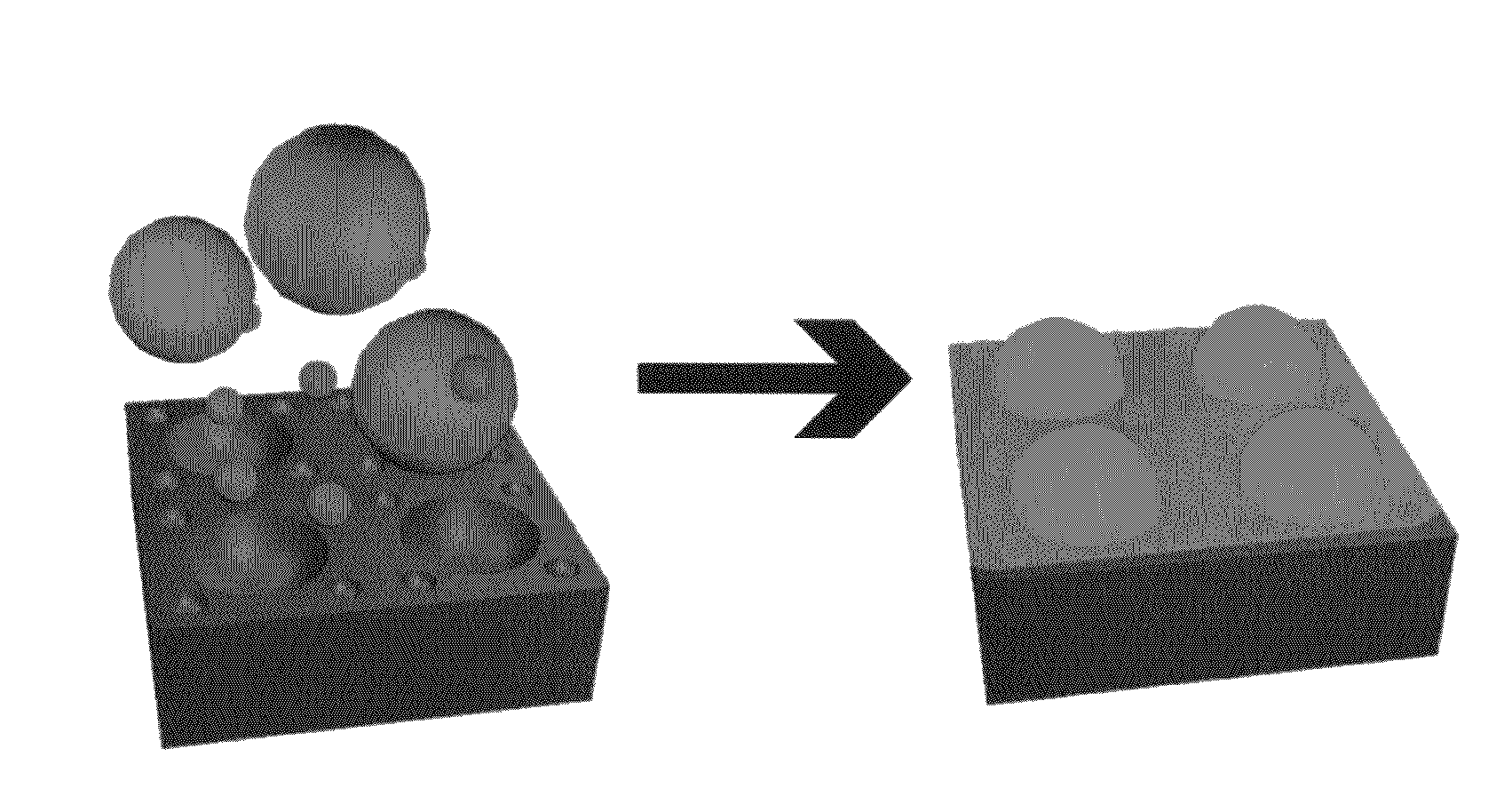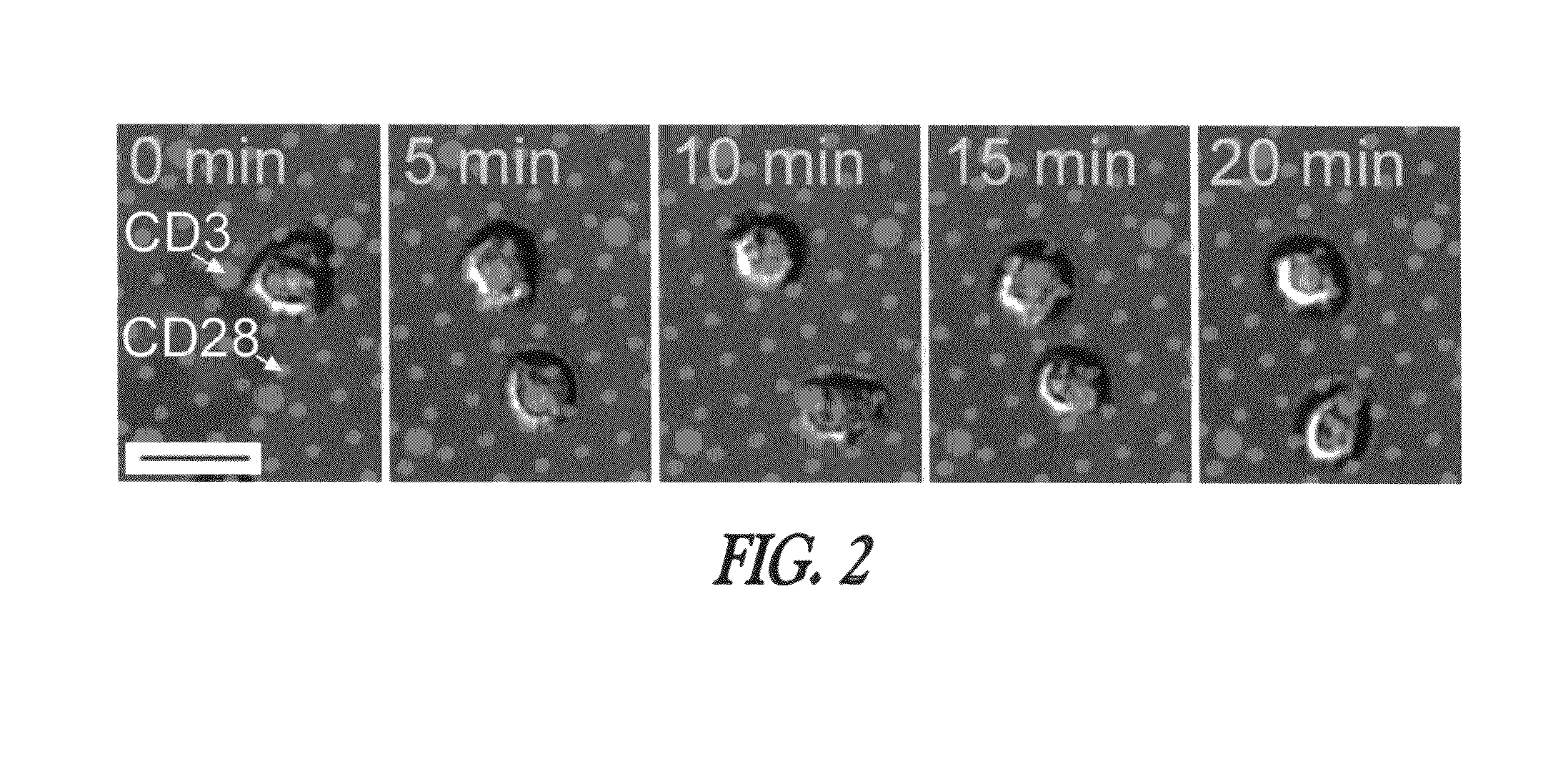Micropatterned T cell stimulation
a t cell and micro-patterned technology, applied in the field of micro-patterned t cell stimulation, can solve the problems of patients' immune systems being compromised, patients being vulnerable to infection, and simply having a functional immune system not providing absolute protection from all foreign substances, so as to achieve the effect of modulating the development and activation
- Summary
- Abstract
- Description
- Claims
- Application Information
AI Technical Summary
Benefits of technology
Problems solved by technology
Method used
Image
Examples
example 1
Materials and Methods
[0126]This Example describes certain materials and methods that have been useful in the development of the invention.
[0127]Substrate preparation. Glass coverslips were cleaned by immersion into hot detergent (Linbro 7×, diluted 1:3 with deionized water), rinsed extensively with deionized water, and then baked at 450° C. for 6 hours. For microcontact printing, topological masters were made by ebeam lithography using a 1 μm polymethyl methacrylate (PMMA) layer, spin-coated onto silicon wafers.
[0128]Hybrid, dual rigidity stamps were made by spin-coating a thin layer of hard polydimethylsiloxane (PDMS) onto the masters (see, Odom et al., (2002) Langmuir 18, 5314-5320; Schmid, H. & Michel, B. (2000) Macromolecules 33, 3042-3049). A thick layer of Sylgard 184 (Dow Corning) was then added. Stamps were used in this as-cast, hydrophobic state for patterning.
[0129]Stamps were coated with antibodies in the indicated patterns (maintaining a total antibody concentration of r...
example 2
T Cells Recognize and Respond to Micrometer-Scale Organization in the Presentation of TCR / CD28 Ligands
[0136]This Example shows that the spatial organization of signal molecules presented to T cells modulates the response of those T cells.
[0137]Patterning of multicomponent surfaces. Experiments were designed to create trifunctionalized surfaces containing independent patterns of activating antibodies to CD3 and CD28, surrounded by ICAM-1. Specifically, “segregated” patterns were generated consisting of anti-CD3 circles surrounded by satellite features of anti-CD28 as illustrated in FIG. 1. Combining rounds of microcontact printing, one for each of the two different antibodies, provided an effective means for creating sharply defined surfaces with minimal cross-contamination between regions (FIG. 1B). Colocalized patterns of anti-CD3 and anti-CD28 (FIG. 1C) were defined by combining these antibodies together in solution for use in a single microcontact printing step.
[0138]T cell activ...
PUM
| Property | Measurement | Unit |
|---|---|---|
| area | aaaaa | aaaaa |
| area | aaaaa | aaaaa |
| areas | aaaaa | aaaaa |
Abstract
Description
Claims
Application Information
 Login to View More
Login to View More - R&D
- Intellectual Property
- Life Sciences
- Materials
- Tech Scout
- Unparalleled Data Quality
- Higher Quality Content
- 60% Fewer Hallucinations
Browse by: Latest US Patents, China's latest patents, Technical Efficacy Thesaurus, Application Domain, Technology Topic, Popular Technical Reports.
© 2025 PatSnap. All rights reserved.Legal|Privacy policy|Modern Slavery Act Transparency Statement|Sitemap|About US| Contact US: help@patsnap.com



